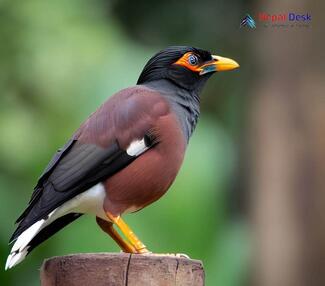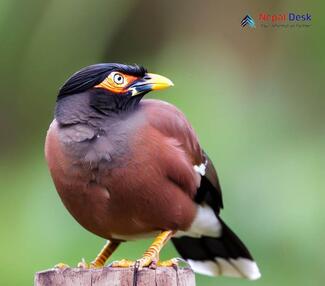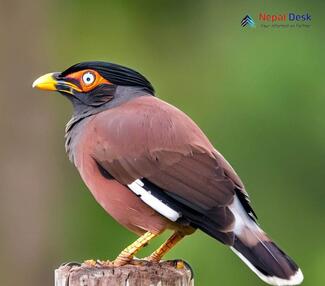Bank Mynas, scientifically known as Acridotheres ginginianus, have truly won the hearts of bird lovers in Nepal. Their shiny black feathers and eye-catching markings around their eyes make them impossible to ignore. You can spot these remarkable birds throughout the lowlands of Nepal, happily singing in various habitats such as farms, cities, and shrub forests. Let's dive deeper into the captivating world of the Bank Myna in Nepal and learn about its ecological importance.
The Enchanting Traits of Bank Mynas
One unique feature of Bank Mynas that sets them apart is the noticeable bare skin patch around their eyes. This vibrant yellow-orange marking creates a striking contrast with their dark feathers, making it easy to differentiate them from other birds. To top it off, Bank Mynas have a spunky crest on their heads which adds flair to their appearance.
More Than Just Gorgeous Birds
Apart from their appealing looks, Bank Mynas play a crucial role in keeping Nepal's ecosystems balanced. These birds are excellent at devouring a variety of insects and small critters, helping control pesky populations. By doing so, they provide invaluable help to farming production and overall environmental health.
Flexibility and Urban Adaptation
As cities continue to grow throughout Nepal, these resourceful birds have shown amazing persistence and adaptability. They're not only successful in rural regions near riversides and shrub forests but have also exhibited an aptitude for adjusting to urban life. The Bank Mynas utilize man-made structures like buildings or bridges to build their nests within cavities and exploit human environments for food sources.
Protective Measures
Although Bank Myna populations are currently stable across Nepal, understanding factors that could potentially endanger them is essential. For example, urbanization and agricultural expansion may result in habitat loss. By raising awareness about the ecological value of Bank Mynas and encouraging responsible development practices, we can help preserve these extraordinary birds for the coming generations.
In Summary
The presence of Bank Mynas in Nepal is a true display of their adaptability and resilience. These captivating birds hold a crucial role in maintaining balanced ecosystems, benefitting nature and humans alike. As urbanization advances, recognizing their ecological value and pushing for conservation efforts is vital. By cherishing the beauty and significance of Bank Mynas in Nepal, we can secure their survival for future generations.




